Archaeologists' discover 2,400-year-old town in Northamptonshire
- Published
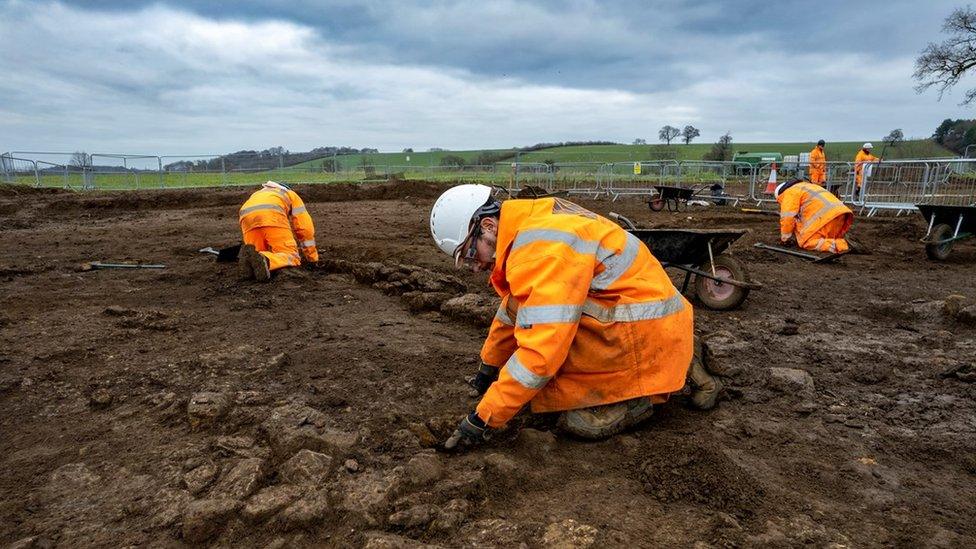
The team behind the construction of a massive new railway line have discovered a huge number of artefacts in an old Roman town. 80 HS2 archaeologists have spent a year digging and searching through the site of the old village in Northamptonshire, making some surprising finds along the way!
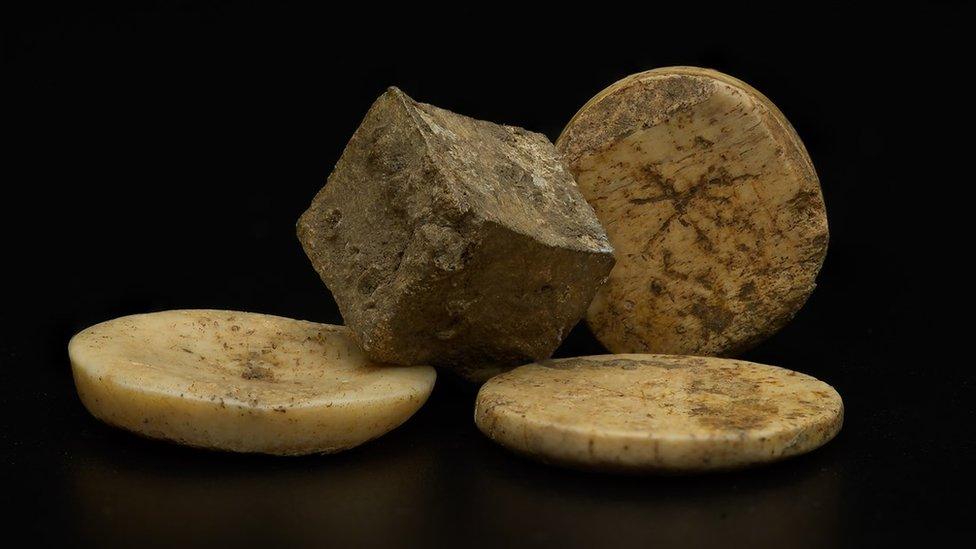
The archaeologists have come across a lot of old objects that suggest the town was originally an Iron Age village, first established more than 2,000 years ago! It's thought that it later became a wealthy Roman town. This picture shows a die and gaming counters, very similar to the ones you would use with modern board games today. Do you think the Romans loved snakes and ladders as much as we do?
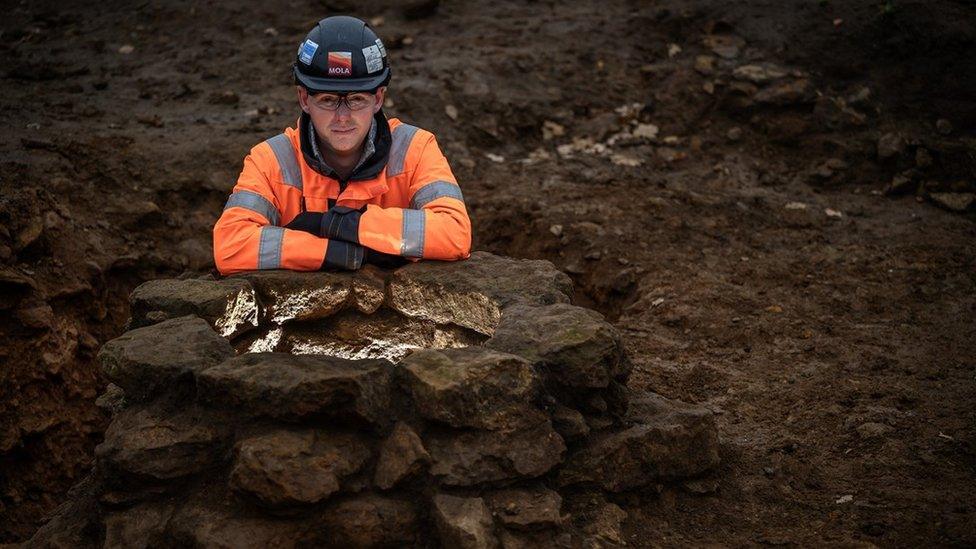
The town had been divided into areas that were for living and areas that were for trading and making things. They found pots and bright red earth, meaning it was likely they had kilns for making pottery and bread. One of the archaeologists here sits behind one of the four wells discovered. This would have been vital for the town to be able to access water for day-to-day life.
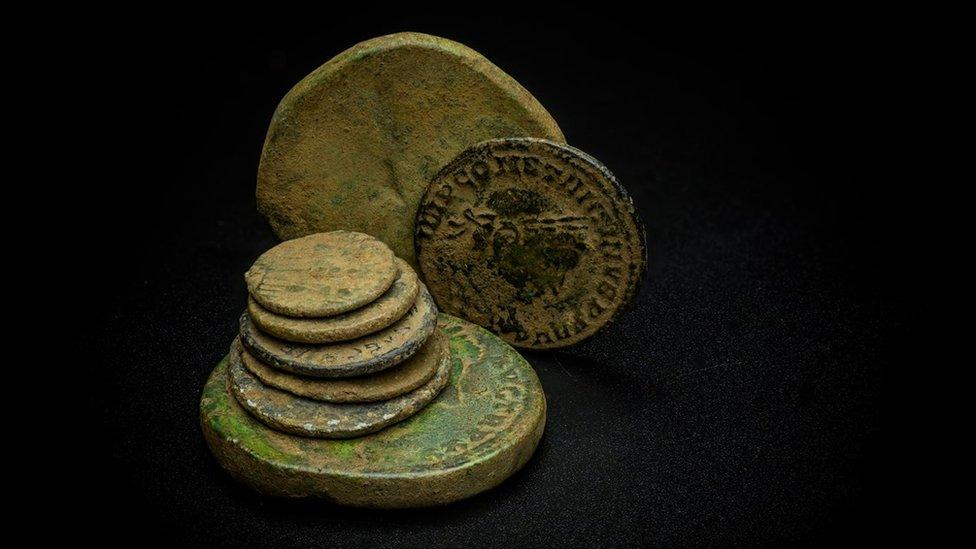
More than 300 Roman coins were discovered along a 10-metre-wide stretch of old road. The archaeologists believe this would have been a wealthy town, with lots of traders coming to visit. As well as these coins, old glass jars and jewellery were discovered, which would have been highly-valued at that time.
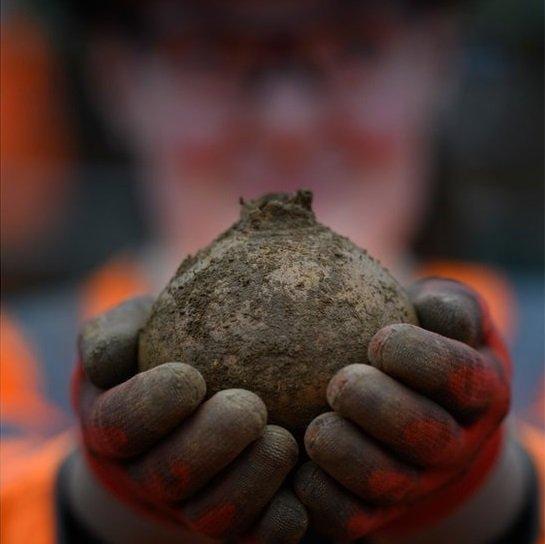
One of the people in charge of the dig, James West, said that this has been "one of the most impressive sites" discovered during their time working on the HS2 railway. He said: "Uncovering such a well-preserved and large Roman road, as well as so many high quality finds, has been extraordinary and tells us so much about the people who lived here".
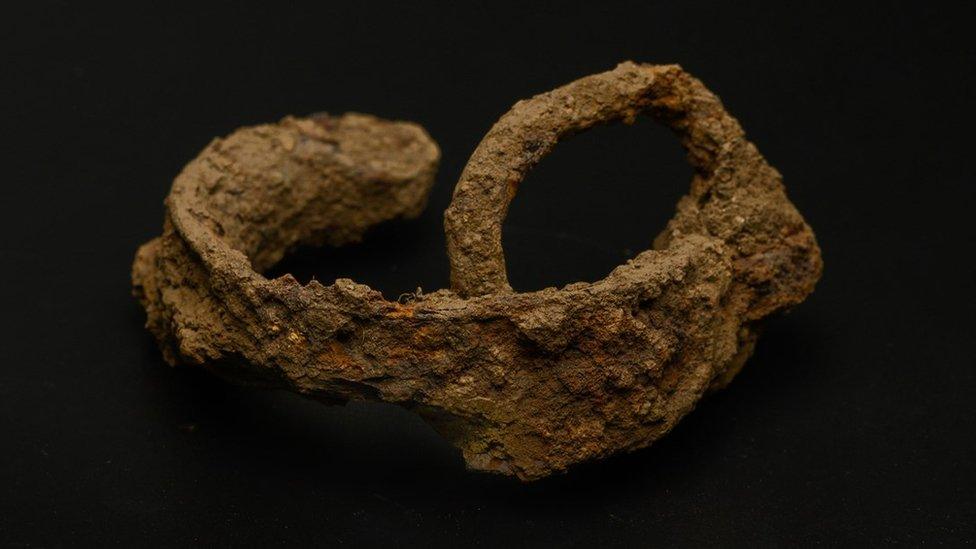
While the town appeared to be wealthy, there are some objects that suggest slaves lived or worked there too. Half of an old shackle, used to trap people's ankles or wrists, was found in the dig. It's thought that Roman slaves were first brought to Britain 43AD, and wealthy Romans could own tens if not hundreds of slaves.
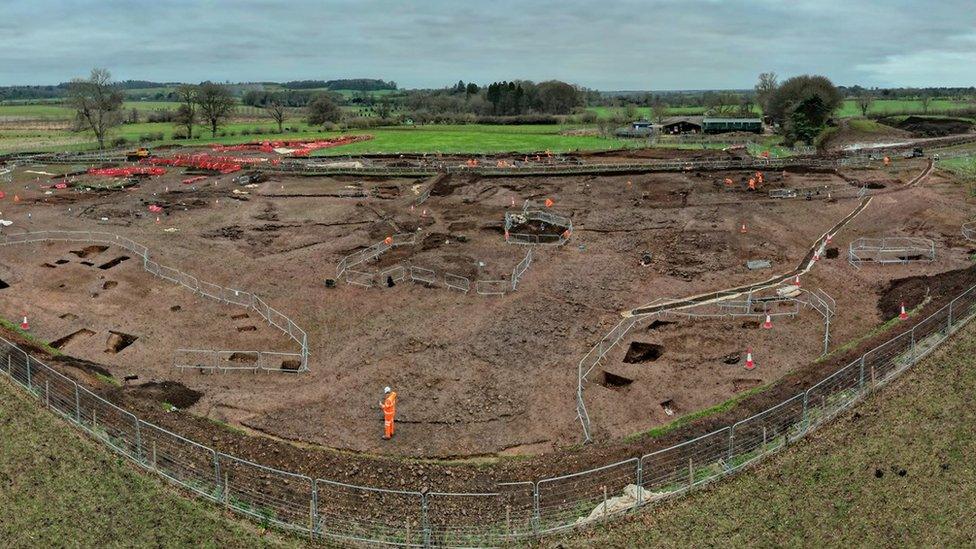
The site has been called Blackgrounds because of the black soil that is found there. It is one of more than 100 sites that have been examined by archaeologists working for HS2 since 2018. This is in preparation for building a high-speed railway line between London and Birmingham. The digs are vital to help prevent important historical sites from being destroyed or built over.
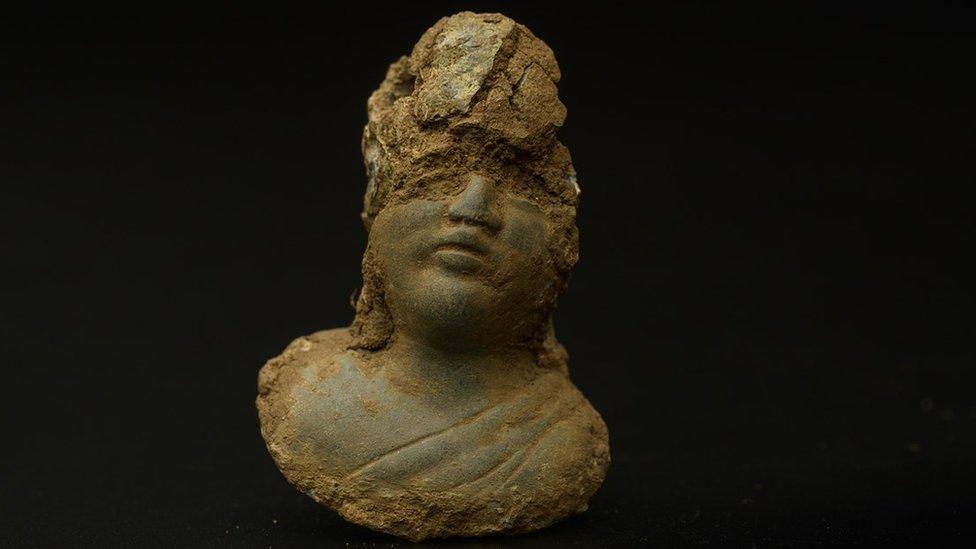
The archaeologists working on the site are excited to find out more about the history of Iron Age Britain and Roman Britain. Mike Court, lead archaeologist for HS2, said: "The opportunity to carefully examine a site such as Blackgrounds, and map out a long history of the site, brought to life through artefacts, building remains and roads, has enabled us to provide a more in-depth understanding of what life was like in rural south Northamptonshire in the Iron and Roman Age."
- Published10 January 2022
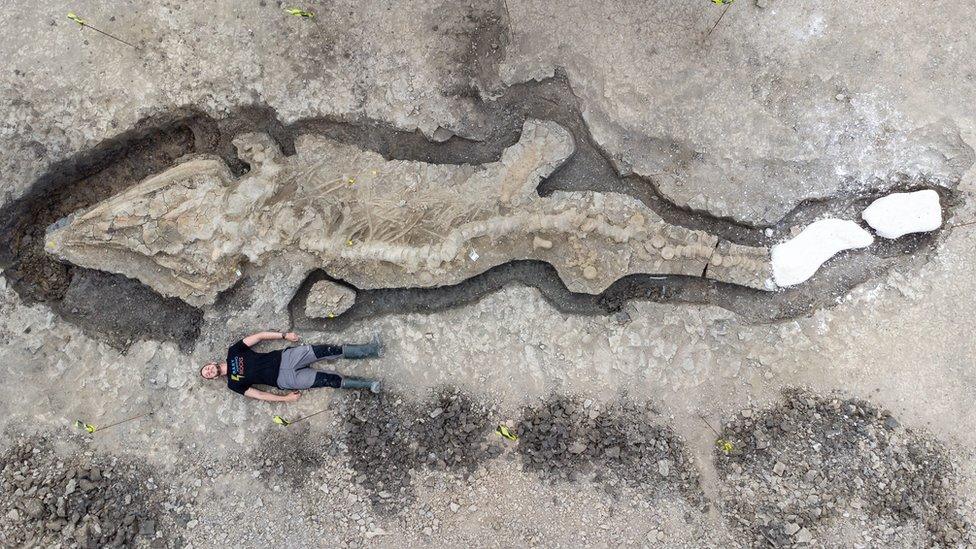
- Published19 May 2022
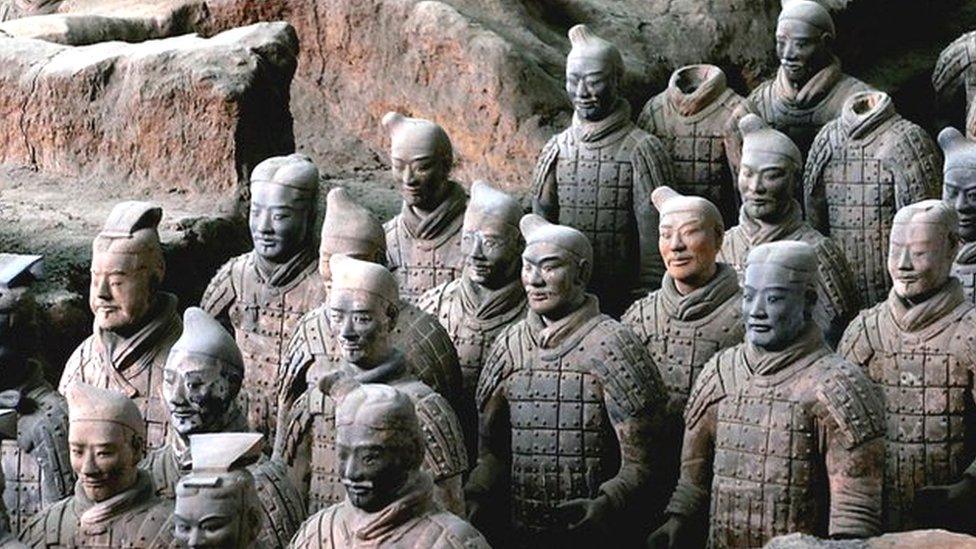
- Published13 September 2018
